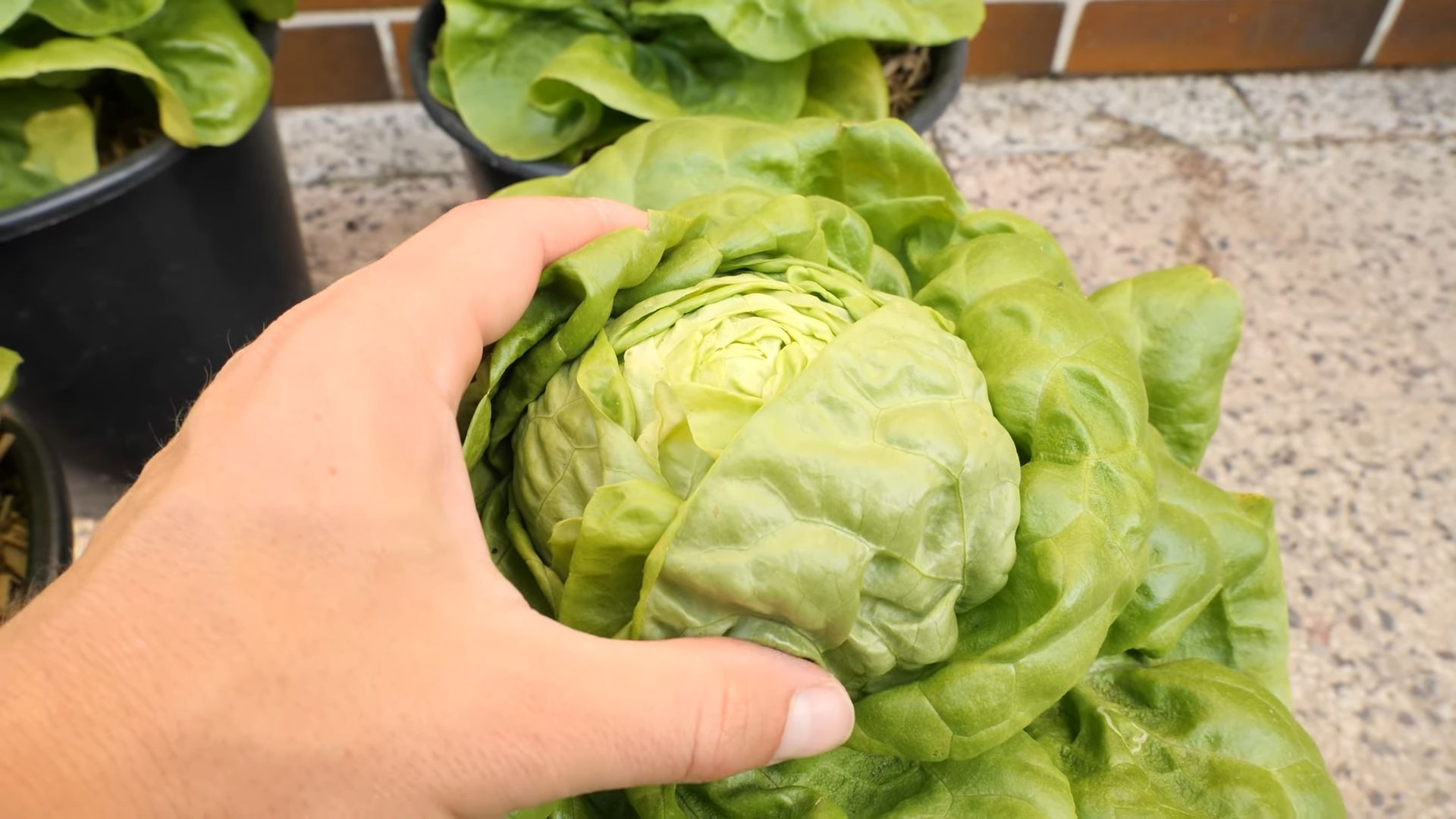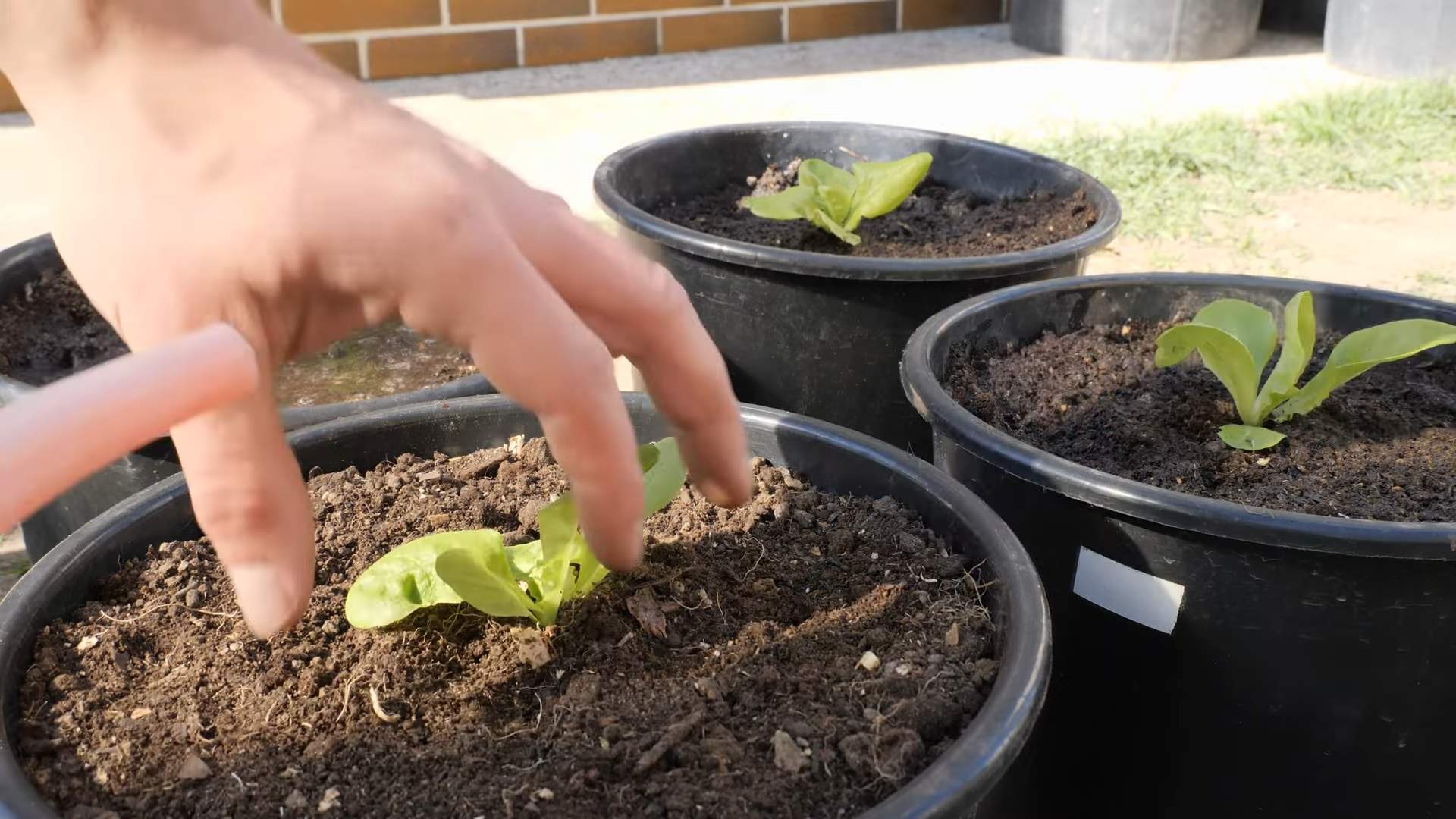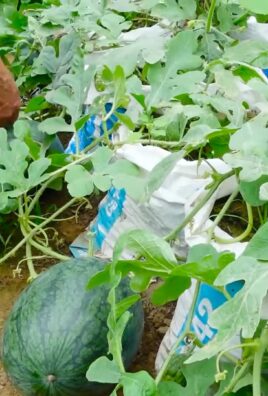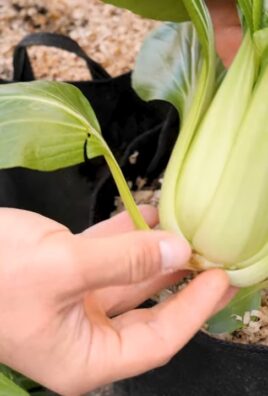Grow Lettuce in Containers and unlock a world of fresh, crisp salads right outside your door! Imagine stepping onto your balcony or into your backyard and harvesting the perfect lettuce leaves for your lunch, all thanks to your own green thumb. For centuries, cultivating food close to home has been a vital part of human life. From ancient Roman rooftop gardens to the victory gardens of World War II, the ability to produce our own food has always been empowering and deeply satisfying.
But let’s face it, not everyone has acres of land to dedicate to a sprawling vegetable garden. That’s where container gardening comes in! And specifically, learning how to grow lettuce in containers is a game-changer. It’s perfect for apartment dwellers, those with limited space, or anyone who wants a convenient and readily available source of fresh greens. Plus, it’s incredibly rewarding to nurture a plant from seed to salad.
This DIY guide is packed with simple, effective tricks and hacks that will help you successfully grow lettuce in containers, no matter your experience level. I’ll share my secrets for choosing the right containers, selecting the best lettuce varieties, and providing the perfect growing conditions. Say goodbye to wilted, overpriced lettuce from the grocery store and hello to a bountiful harvest of homegrown goodness!

Grow Your Own Delicious Lettuce in Containers: A Beginner’s Guide
Hey there, fellow gardening enthusiasts! Are you craving fresh, crisp lettuce but don’t have a sprawling garden? No problem! Growing lettuce in containers is a fantastic way to enjoy homegrown greens, even if you only have a small balcony or patio. I’ve been container gardening for years, and lettuce is one of the easiest and most rewarding crops to grow. Let me walk you through everything you need to know to get started.
Choosing the Right Container and Soil
First things first, let’s talk about the essentials: your container and soil. These are the foundation for a successful lettuce crop.
* Container Size: Lettuce doesn’t need a super deep container, as its roots are relatively shallow. A container that’s at least 6 inches deep and 6 inches wide is a good starting point for a single head of lettuce. For loose-leaf varieties or if you want to grow multiple plants together, opt for a larger container, like a window box or a wide planter. I personally love using rectangular planters because they allow me to grow a variety of lettuce types in one space.
* Drainage: This is crucial! Make sure your container has drainage holes at the bottom. Lettuce hates sitting in soggy soil, which can lead to root rot. If your container doesn’t have drainage holes, you can drill some yourself.
* Material: Containers come in all sorts of materials – plastic, terracotta, ceramic, even fabric. Plastic containers are lightweight and retain moisture well, but they can heat up quickly in direct sunlight. Terracotta pots are porous, allowing for better airflow, but they dry out faster. Fabric pots are great for drainage and aeration, but they might require more frequent watering. Choose what works best for your climate and watering habits. I’ve had success with all types, but I tend to favor plastic for its moisture retention, especially during hot summer months.
* Potting Mix: Don’t use garden soil in your containers! It’s too heavy and doesn’t drain well. Instead, use a high-quality potting mix specifically formulated for containers. Look for a mix that contains peat moss, perlite, and vermiculite. These ingredients help with drainage, aeration, and moisture retention. You can also add some compost to your potting mix for extra nutrients. I like to mix in about 25% compost to give my lettuce a good boost.
Selecting Your Lettuce Varieties
Now for the fun part: choosing your lettuce varieties! There are so many delicious options to choose from.
* Loose-Leaf Lettuce: These are the easiest to grow and harvest. You can snip off individual leaves as needed, and the plant will continue to produce more. Some popular loose-leaf varieties include Black Seeded Simpson, Red Sails, and Oak Leaf. I highly recommend starting with loose-leaf lettuce if you’re a beginner.
* Butterhead Lettuce: These form loose heads with soft, buttery leaves. Boston and Bibb are classic butterhead varieties. They’re a bit more delicate than loose-leaf lettuce, but they’re incredibly flavorful.
* Romaine Lettuce: This is the lettuce used in Caesar salads. It forms tall, upright heads with crisp, sturdy leaves. Romaine is a bit more challenging to grow than loose-leaf or butterhead, but it’s worth the effort.
* Crisphead Lettuce: This is the classic iceberg lettuce. It forms tight, dense heads. Crisphead lettuce is the most difficult to grow in containers, as it requires consistent moisture and cool temperatures. I usually skip this one in my container garden.
Consider your taste preferences and your local climate when choosing your lettuce varieties. Some varieties are more heat-tolerant than others. If you live in a warm climate, look for varieties that are specifically bred for heat resistance.
Planting Your Lettuce
Alright, let’s get our hands dirty! Here’s how to plant your lettuce in containers:
1. Fill the Container: Fill your container with your chosen potting mix, leaving about an inch of space at the top.
2. Sow the Seeds (or Transplant Seedlings): You can either start your lettuce from seeds or transplant seedlings that you’ve purchased from a nursery. If you’re starting from seeds, sow them about ¼ inch deep and 1 inch apart. If you’re transplanting seedlings, gently remove them from their pots and plant them at the same depth they were growing in before.
3. Water Gently: Water the soil gently after planting, making sure to moisten it thoroughly. Avoid overwatering, which can cause the seeds to rot.
4. Provide Adequate Sunlight: Lettuce needs at least 4-6 hours of sunlight per day. Place your container in a sunny location, such as a balcony, patio, or windowsill. If you don’t have enough natural sunlight, you can supplement with grow lights. I’ve used grow lights successfully during the winter months when sunlight is scarce.
5. Thin Seedlings (if necessary): Once your seedlings have emerged and have a few true leaves, thin them out so that they’re spaced about 4-6 inches apart. This will give them enough room to grow and prevent overcrowding.
Caring for Your Lettuce
Now that your lettuce is planted, it’s time to provide it with the care it needs to thrive.
* Watering: Lettuce needs consistent moisture, but it doesn’t like to be waterlogged. Water your lettuce whenever the top inch of soil feels dry to the touch. Water deeply, making sure to moisten the entire root zone. Avoid watering the leaves, as this can encourage fungal diseases. I prefer to water in the morning so that the leaves have time to dry out before nightfall.
* Fertilizing: Lettuce is a light feeder, but it will benefit from regular fertilization. Use a balanced liquid fertilizer diluted to half strength every 2-3 weeks. You can also amend the soil with compost or worm castings to provide slow-release nutrients.
* Pest Control: Lettuce is susceptible to a few common pests, such as aphids, slugs, and snails. Check your plants regularly for signs of infestation. You can control aphids with a strong spray of water or by introducing beneficial insects like ladybugs. Slugs and snails can be handpicked or trapped with beer traps. I’ve found that diatomaceous earth is also effective at controlling these pests.
* Weed Control: Keep your container free of weeds, which can compete with your lettuce for nutrients and water. Hand-pull any weeds that appear.
* Bolting Prevention: Bolting is when lettuce plants send up a flower stalk and become bitter. This usually happens when the weather gets too hot. To prevent bolting, choose heat-tolerant varieties, provide shade during the hottest part of the day, and water regularly. You can also harvest your lettuce frequently to encourage new growth.
Harvesting Your Lettuce
The best part of growing your own lettuce is, of course, harvesting it!
* Loose-Leaf Lettuce: You can start harvesting loose-leaf lettuce as soon as the leaves are large enough to eat. Simply snip off the outer leaves with scissors or a knife, leaving the inner leaves to continue growing.
* Butterhead and Romaine Lettuce: Harvest these types of lettuce when the heads are firm and well-formed. Cut the entire head off at the base of the plant.
* Harvesting Time: Harvest your lettuce in the morning, when the leaves are crisp and cool. Avoid harvesting during the heat of the day, as the leaves will be wilted and less flavorful.
Succession Planting for Continuous Harvest
To enjoy a continuous supply of fresh lettuce, practice succession planting. This means planting new seeds or seedlings every 2-3 weeks. This way, you’ll always have lettuce ready to harvest. I usually start a new batch of seeds indoors while I’m harvesting the previous batch.
Troubleshooting Common Problems
Even with the best care, you might encounter a few problems while growing lettuce in containers. Here are some common issues and how to address them:
* Yellowing Leaves: This can be caused by overwatering, underwatering, nutrient deficiencies, or pests. Check the soil moisture and adjust your watering accordingly. Fertilize your lettuce with a balanced fertilizer. Inspect your plants for pests and treat them as needed.
* Wilting Leaves: This is usually caused by underwatering or heat stress. Water your lettuce deeply and provide shade during the hottest part of the day.
* Bitter Taste: This is usually caused by bolting. Prevent bolting by choosing heat-tolerant varieties, providing shade, and watering regularly.
* Slow Growth: This can be caused by insufficient sunlight, nutrient deficiencies, or poor soil. Make sure your lettuce is getting enough sunlight. Fertilize your lettuce with a balanced fertilizer. Use a high-quality potting mix.
Enjoy Your Homegrown Lettuce!
Growing lettuce in containers is a simple and rewarding way to enjoy fresh, delicious greens. With a little bit of care and attention, you can have a continuous supply of homegrown lettuce right at your fingertips. So, grab your containers, potting mix, and seeds, and get started today! Happy gardening!

Conclusion
So, there you have it! Growing lettuce in containers is not just a gardening trend; it’s a game-changer for anyone who craves fresh, flavorful greens right at their fingertips. We’ve walked through the simple steps, from selecting the right container and soil to nurturing your leafy crop to a bountiful harvest. But why is this DIY trick a must-try?
Firstly, it’s incredibly accessible. Whether you have a sprawling backyard or a tiny balcony, container gardening allows you to cultivate your own lettuce patch regardless of space constraints. Secondly, it offers unparalleled control. You dictate the soil quality, watering schedule, and pest management, ensuring your lettuce thrives in an optimal environment. This translates to healthier, tastier greens compared to store-bought options that may have traveled long distances and lost their freshness.
Furthermore, growing your own lettuce is a sustainable and cost-effective choice. You’ll reduce your reliance on commercially grown produce, minimize your carbon footprint, and save money in the long run. Plus, there’s an undeniable satisfaction in harvesting your own food, knowing you nurtured it from seed to table.
But the beauty of container gardening lies in its versatility. Feel free to experiment with different lettuce varieties. Try a mix of romaine, butterhead, and loose-leaf lettuce for a colorful and flavorful salad blend. You can also interplant your lettuce with other herbs like basil, chives, or parsley to create a miniature edible garden. Consider adding companion plants like marigolds to deter pests naturally.
For those seeking a continuous harvest, succession planting is your secret weapon. Sow new seeds every two to three weeks to ensure a steady supply of fresh lettuce throughout the growing season. And don’t be afraid to get creative with your container choices. Repurpose old buckets, baskets, or even hanging planters for a unique and eye-catching display.
Growing lettuce in containers is more than just a gardening project; it’s an opportunity to connect with nature, nourish your body, and enhance your living space. It’s a simple yet rewarding activity that can bring joy and freshness to your daily life.
We wholeheartedly encourage you to give this DIY trick a try. Start small, learn as you go, and don’t be discouraged by initial setbacks. Gardening is a journey of discovery, and every mistake is a valuable lesson.
Once you’ve experienced the joy of harvesting your own homegrown lettuce, we’d love to hear about your experience. Share your photos, tips, and challenges in the comments below. Let’s create a community of container gardening enthusiasts and inspire others to embrace the joys of growing their own food. Happy gardening!
Frequently Asked Questions (FAQ)
What is the best type of container for growing lettuce?
The ideal container for growing lettuce should be at least 6 inches deep to accommodate the root system. The width and length will depend on how many lettuce plants you want to grow. A container that is 12 inches wide and 12 inches long can comfortably hold 3-4 lettuce plants. Ensure the container has drainage holes to prevent waterlogging, which can lead to root rot. Terracotta pots, plastic containers, and even repurposed items like buckets or crates can be used, as long as they provide adequate drainage and space.
What kind of soil should I use for container lettuce?
Lettuce thrives in well-draining, nutrient-rich soil. A good potting mix specifically formulated for vegetables is ideal. Avoid using garden soil, as it can be too heavy and compact in containers, hindering root growth. You can also create your own potting mix by combining equal parts of peat moss (or coconut coir), perlite, and compost. The compost will provide essential nutrients, while the peat moss or coconut coir will retain moisture, and the perlite will improve drainage.
How often should I water my container lettuce?
Lettuce needs consistent moisture to thrive, but overwatering can be detrimental. Water your lettuce when the top inch of soil feels dry to the touch. Water deeply until excess water drains out of the drainage holes. During hot and dry weather, you may need to water daily, while in cooler or rainy conditions, you can reduce the frequency. Avoid overhead watering, as it can promote fungal diseases. Instead, water at the base of the plant.
How much sunlight does container lettuce need?
Lettuce prefers partial shade, especially during the hottest part of the day. Aim for at least 4-6 hours of sunlight per day. If you live in a region with intense summer heat, provide afternoon shade to prevent the leaves from wilting or burning. A location that receives morning sun and afternoon shade is ideal. You can also use shade cloth to protect your lettuce from excessive sunlight.
How do I fertilize my container lettuce?
Lettuce is a relatively light feeder, but it still benefits from regular fertilization. Use a balanced, water-soluble fertilizer diluted to half strength every 2-3 weeks. Alternatively, you can incorporate slow-release fertilizer granules into the potting mix at planting time. Avoid over-fertilizing, as it can lead to leggy growth and bitter-tasting leaves. Organic options like compost tea or fish emulsion are also excellent choices for feeding your lettuce.
How do I harvest my container lettuce?
You can start harvesting lettuce leaves as soon as they are large enough to eat, typically when they are 4-6 inches long. For loose-leaf lettuce varieties, simply snip off the outer leaves, allowing the inner leaves to continue growing. For head lettuce varieties, you can harvest the entire head when it is firm and well-formed. Use a sharp knife or scissors to cut the leaves or head cleanly. Harvesting in the morning, before the sun heats up the leaves, will result in the best flavor and texture.
What are some common pests and diseases that affect container lettuce?
Common pests that can affect container lettuce include aphids, slugs, and snails. Aphids can be controlled with insecticidal soap or a strong spray of water. Slugs and snails can be handpicked or trapped using beer traps. Diseases like downy mildew and powdery mildew can occur in humid conditions. Ensure good air circulation around your plants and avoid overhead watering to prevent these diseases. If necessary, use a fungicide labeled for use on lettuce.
Can I grow lettuce in containers indoors?
Yes, you can grow lettuce in containers indoors, but you’ll need to provide adequate light. A sunny windowsill that receives at least 6 hours of direct sunlight per day is ideal. If you don’t have enough natural light, you can use grow lights. Place the grow lights a few inches above the plants and keep them on for 12-14 hours per day. Indoor lettuce may require more frequent watering than outdoor lettuce, as the air tends to be drier indoors.
What are some good companion plants for lettuce in containers?
Several plants make excellent companions for lettuce in containers. Marigolds deter pests like nematodes and aphids. Radishes help to loosen the soil and deter flea beetles. Carrots attract beneficial insects that prey on lettuce pests. Herbs like basil, chives, and parsley can also be planted alongside lettuce to enhance its flavor and deter pests. Avoid planting lettuce near plants that require a lot of sunlight or have aggressive root systems.
How do I prevent my lettuce from bolting (going to seed)?
Bolting occurs when lettuce is exposed to high temperatures or long days. To prevent bolting, choose heat-tolerant lettuce varieties, provide afternoon shade, and water regularly to keep the soil cool. You can also mulch around the plants to help retain moisture and lower the soil temperature. Harvest your lettuce regularly to encourage continued leaf production and delay bolting. If your lettuce does start to bolt, you can still harvest the leaves, but they may become bitter.




Leave a Comment